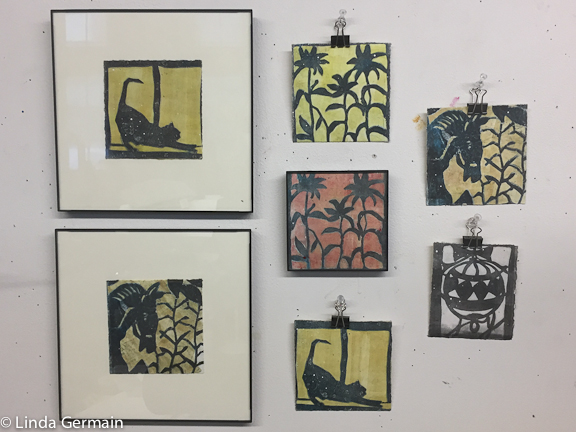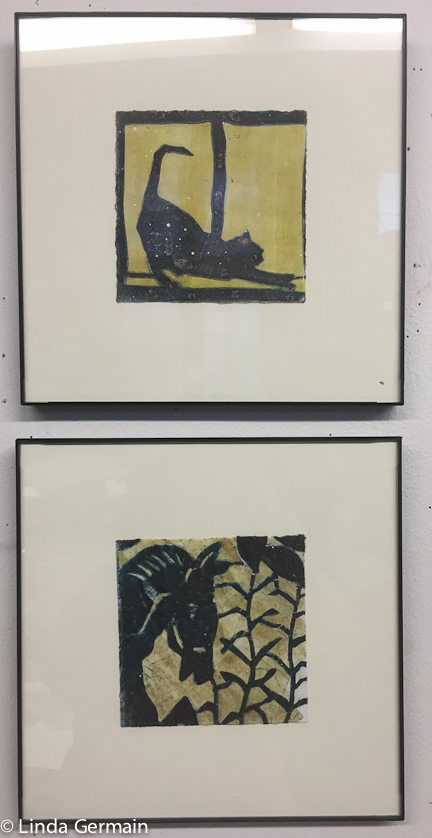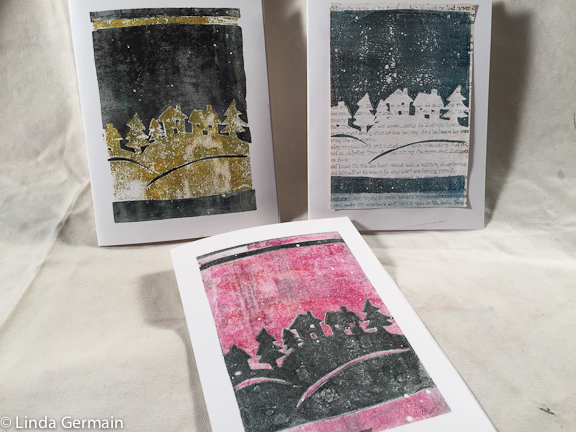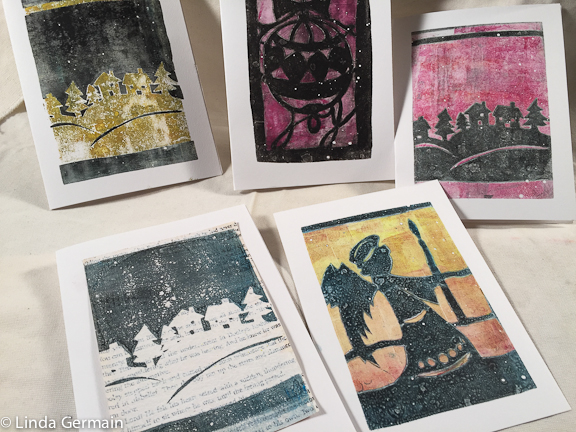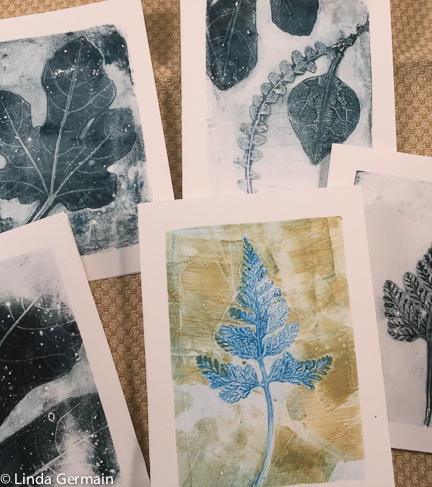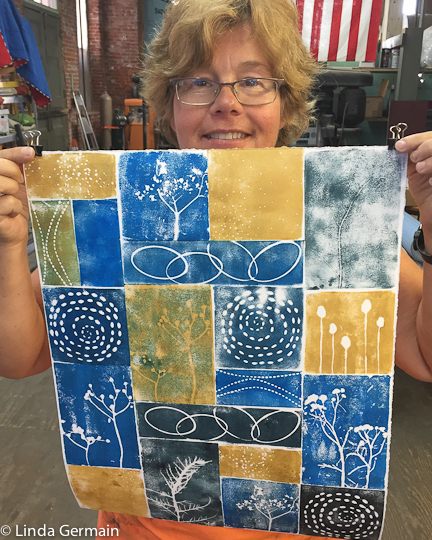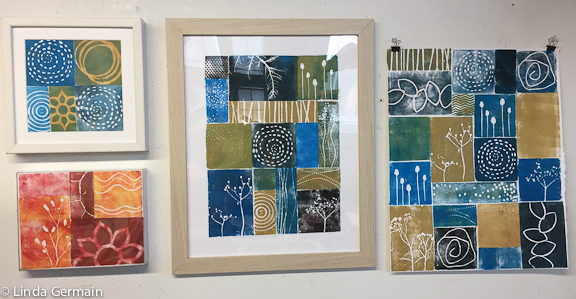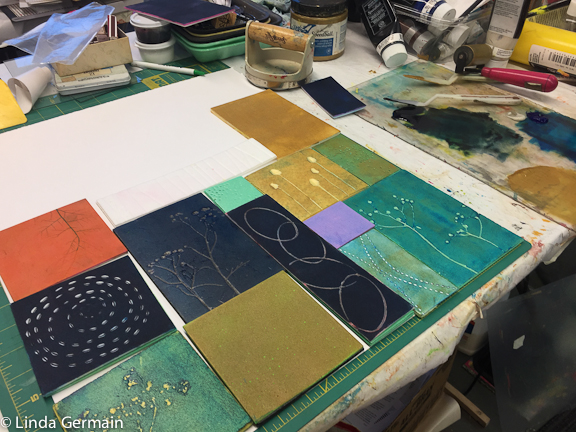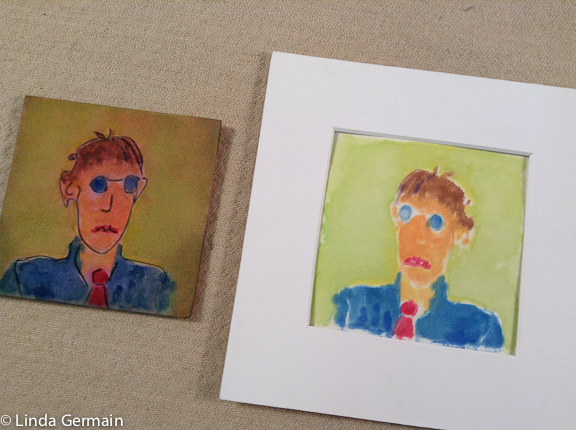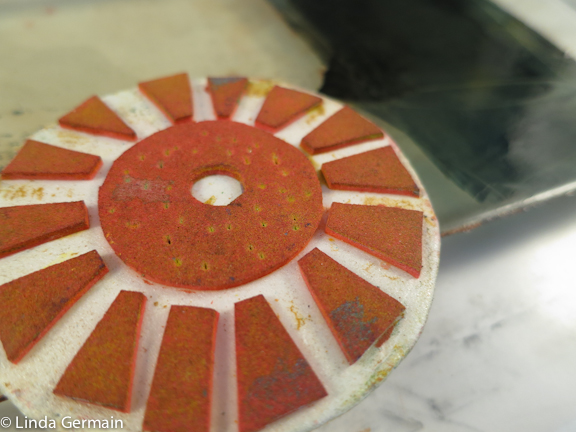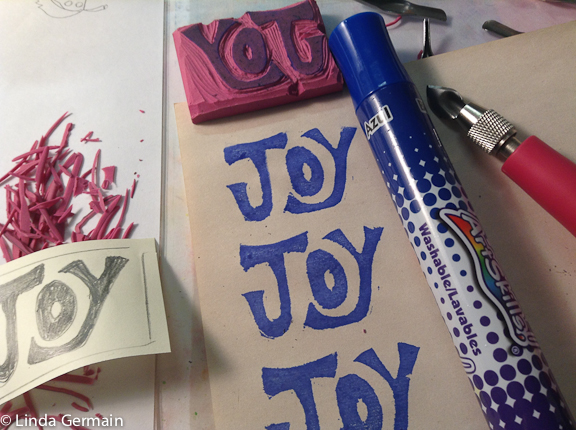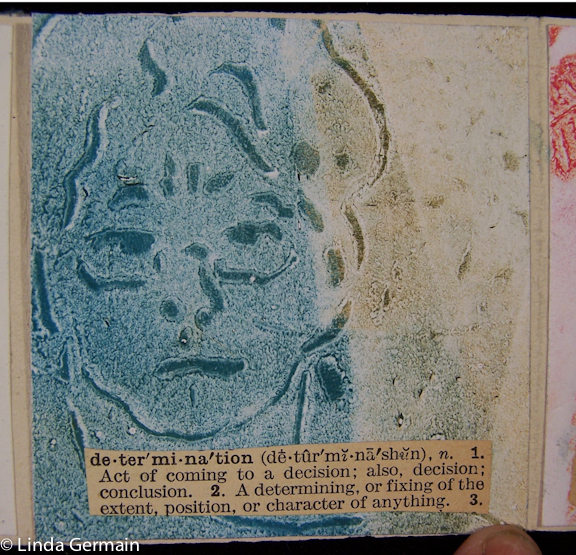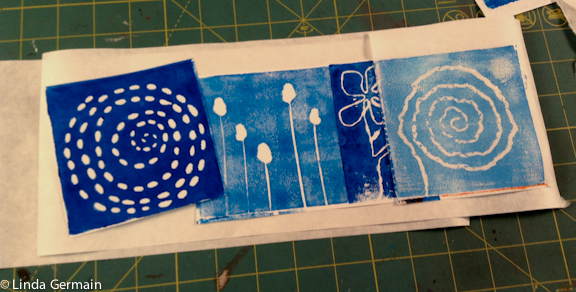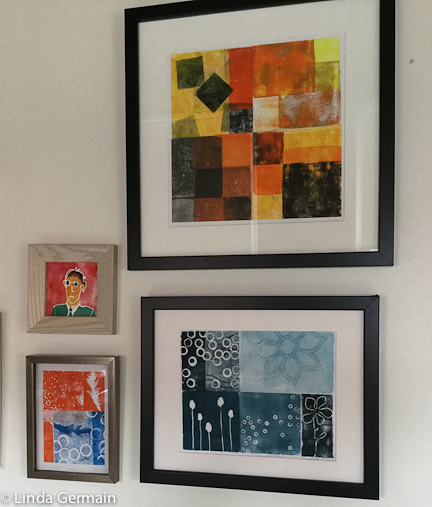Have you used Tyvek® to make stencils for your gelatin printing projects?
I am excited to introduce you to the benefits of Tyvek® as stencil material, in this weekend workshop, Hand Printed Cards.
Why Tyvek® for stencil making?
Tyvek® is strong, durable and waterproof. These are great qualities for stencil material. It is also easy to cut.
You can find Tyvek®:
If you want to be inspired by a cut paper artist who uses Tyvek® – then check out the work of Beatric Coron.
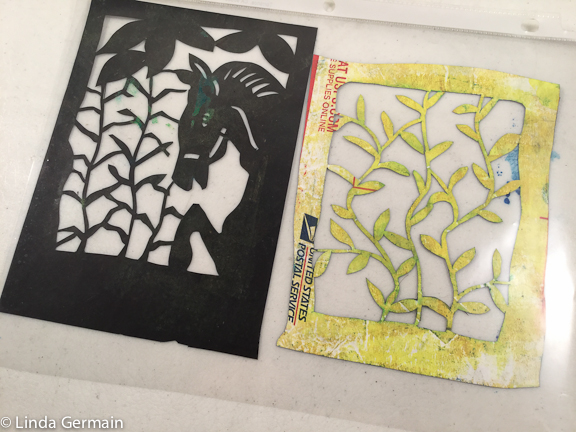
What kind of stencil is it?
I have a special name for this kind of stencil – “a masking stencil with a frame.” I use these descriptive words to distinguish the stencil and the way that I use it to create a beautiful, multi-colored image.
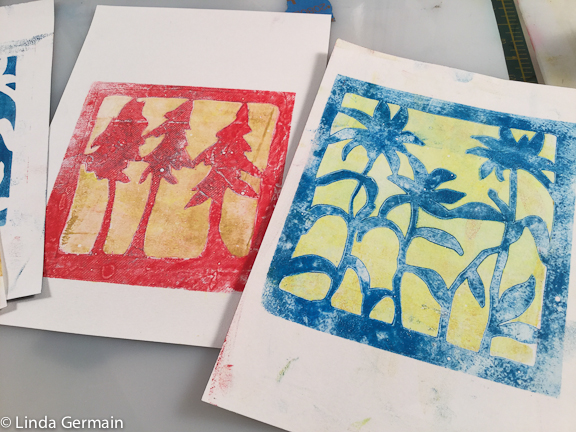
My approach to printing with these stencils includes using the gelatin plate, which is soft and malleable and can transfer delicate details to the paper.
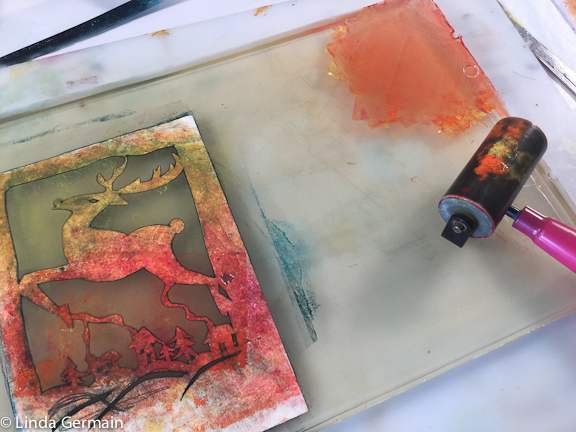
In the image above the lucious black in is under the stencil and the background colors are rolled over the stencil.
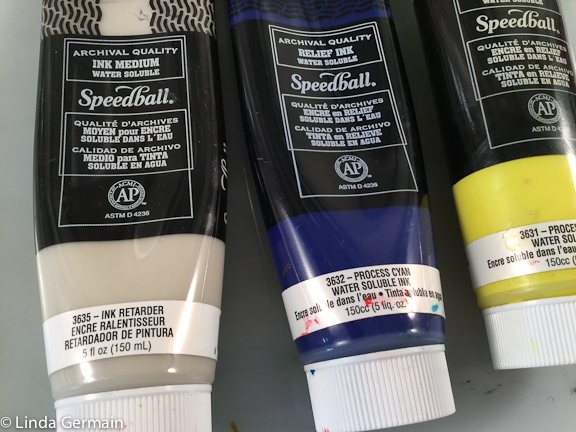
The thing that I love about the combination of the Tyvek® stencil, the gelatin plate and the speedball water based block printing ink is that it is very easy to make many beautiful, clean edged, completed prints very fast.
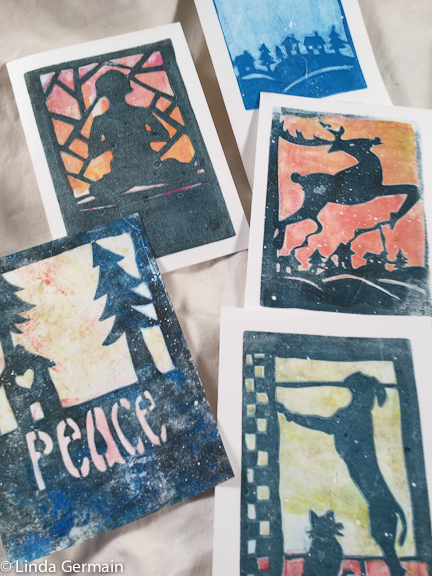
So if this sound interesting to you, then check out the details and join us in the online printmaking workshop, Hand Printed Cards + Tyvek® stencils + gelatin plate. Read the details on the workshop page.
